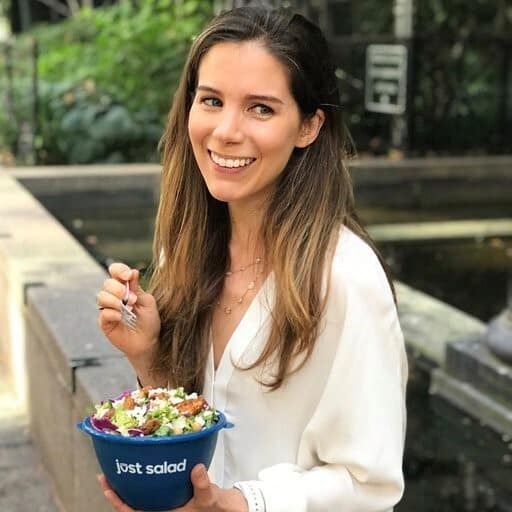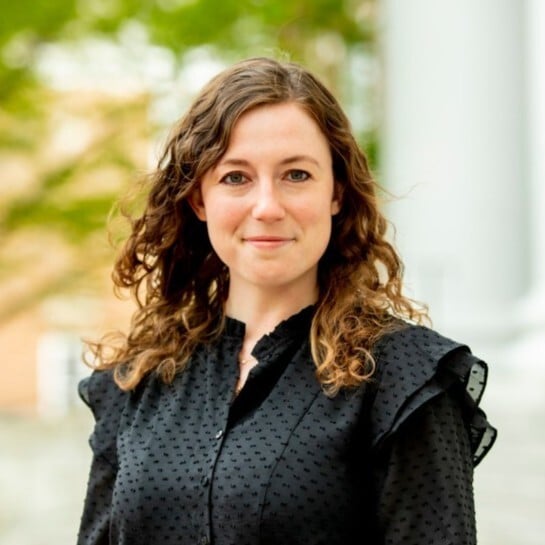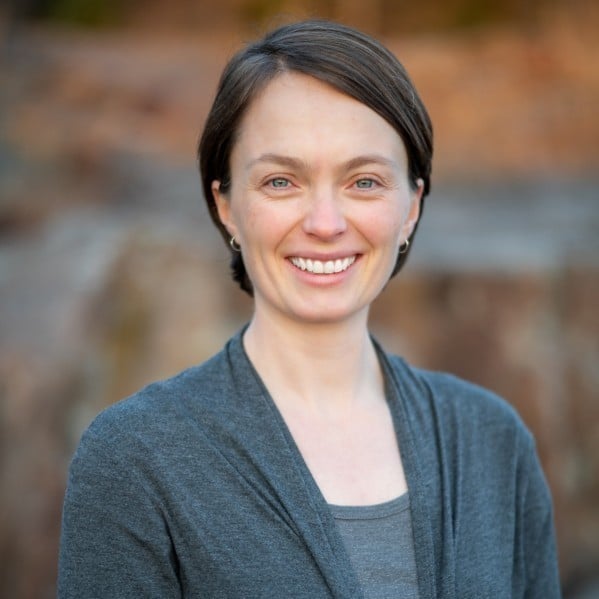Welcome to The Multi-usiverse. Alongside your guide, Garr Punnett, explore worlds of opportunity within the use of physical resources across companies and organizations. Consider this a field guide in scaling reuse, refurbishment, remanufacturing, and recirculation. We’ll learn from guests who have ventured down this path and carved their way. Our aim is to discuss the successes, opportunities, and challenges of scaling a connected, circular economy. On this episode we’re joined by Rheaply team members Roma Patel, Product Management Associate, and Sam Schurr, Customer Success Manager. Join as they discuss Rheaply’s success at Rush University Medical Center and Barnard College.
Audio Transcript:
Garr Punnett (00:16)
Welcome back, everybody, to the Multiusiverse podcast. My name is Garr Punnett. I’m the Chief of Staff here at Rheaply and Circular economist. However, we’re we’re doing something a little bit different today. Usually we’ve got a guest and we’re talking about what it’s like in the market, and we’re talking about reuse. This is going to be a little bit of a more introspective podcast where we talk about Rheaply and we focus on things that we’re working on. I’m joined by two lovely women who can now introduce themselves as we start to talk about what does it mean for the Multiusiverse when we’re not talking about clients and carbon? So excellent. Let’s get right to it. Hello, Roma. Could you please introduce yourself?
Roma Patel (00:58)
Yes, hello. My name is Roma Patel. I am product management associate here at Rheaply. And I am primarily involved with leading our efforts to include carbon related reporting on our platform, along with other product management things, working with our designers and engineers, making sure our product is in a good place.
Garr Punnett (01:22)
Excellent. Sam?
Sam Schurr (01:23)
Yes, I am Sam. Sure. I am a customer success manager here. I work with roughly 50% of our clients, helping them maximize their reuse.
Garr Punnett (01:35)
So we were just talking about Rush University. Tell us a little bit more about what we recently did with them, the building that you all saw, and then we can start to talk about again at scale, how much reuse potential there is still when it comes to buildings and stuff that we see at our clients.
Sam Schurr (01:53)
Totally. Yeah. So this is a project that actually started before I even joined. So it’s been going on basically this whole calendar year. But there’s a building at Rush called Kidston that is scheduled to be demolished. Everything inside of that building is still valuable. Roma and I got the opportunity to tour the building and work with our admins there who are superstars. Ian and Katie. They were inventorying things in the building, posting it on the platform to try to encourage folks at Rush to claim those items, pick them up, reuse them on campus, because the alternative we want to avoid is those items going into landfill. So Roman and I got to spend the morning with them, kind of observing, asking a lot of questions, but also just being I mean, they’re really superstar admins, and they’re like major power users. So just honestly learning from them methods that they’ve employed for getting a lot of stuff on the platform, seeing them use it on their phones, being able to ask them questions in the moment, I think that was really cool.
Roma Patel (03:01)
Yeah. That was the first time I had seen someone use their phones the entire session.
Garr Punnett (03:08)
Excellent.
Roma Patel (03:09)
Getting listings on our platform, going into the motions to get everything uploaded. And it was very cool to be a part of that.
Garr Punnett (03:19)
Yeah. Please paint the picture a little bit of it.
Sam Schurr (03:22)
I’m just thinking back when you were there and it did very much feel like we were kind of like zookeepers or scientists. That’s how you’re holding phone and it’s horizontal. But now it sounds so minute, but it was so special just to have that time to kind of observe it and just to kind of literally see the stuff in front of us.
Roma Patel (03:43)
Being able to touch the desk, being able to understand.
Sam Schurr (03:45)
Like, why are you posting this the way you’re posting it? Why aren’t we posting this one? Oh, it is literally screwed into the wall. And if anyone moves it, it’ll be like, bad.
Garr Punnett (03:58)
I think what people sometimes don’t realize that if they’re not working with some of these resources or assets at the level that we are or some of our admin and clients are, they don’t realize what’s actually going on behind the scenes. Can you talk a little bit more about what we may be see on a daily basis where you’re going to a client and it’s a thousand things that just might be sitting in a building that are looking for a new home. Talk a little bit more about the pain points that we’re trying to solve when it comes to those clients.
Roma Patel (04:27)
Yeah. I think we would want them to easily be able to locate those items, easily be able to get them uploaded onto our platform. And where we’re headed with that in our product is having an ability to upload many photos at one singular time, have those photos be uploaded, have that visibility there into what they want to upload on the platform because break that down.
Garr Punnett (04:54)
You’re dealing with maybe six things in a room that may be the same item or might be variations of the same item, but it’s easier just to snap pictures and then start to categorize them on your phone. And that’s what we need to sort of get people to do a little bit faster.
Roma Patel (05:11)
Exactly. Yes. That would be the goal. And the intention is where we’re headed for in our product strategy next year. So you have visibility and have more eyes on our platform for sure.
Garr Punnett (05:24)
What type of feedback have you heard from our clients on where the platform is, where we need to be going? What type of testimonials do we have from some of our people?
Sam Schurr (05:36)
Yeah. Again, our rock star admins at Rush. I don’t know. I cannot think of a way they would have been able to get the material that’s in that building out two people at Rush without the platform, it would have been thrown away. And I think they’re really excited that they have this opportunity in terms of feedback. The real life experiences that Roman I had this year all kind of happened before you could post multiple listings at the same time. That was a huge feature that came out this year that would have been helpful, really changed the game. They’re so grateful for that feature. Gosh, it would have been great to have would have been have at Arnard. Yeah. Right. And we can totally pivot there.
Garr Punnett (06:16)
Yes. Tell everybody a little bit about what that was because that’s a little bit same. So this was another University we work with. They were doing a clear out event a little bit different in terms of how the clear out was positioned. Again, rush University was a building in which things were sitting around. Barnard was very much an event that was being built around getting rid of assets. Can you talk a little bit more about that process and what it went into building that?
Sam Schurr (06:44)
Definitely. So the green sale of Barnard is an existing event that happened years before recently even existed. We were trying to figure out with our clients there how we can support them, make that event run smoother, and gather some data from the event. I mean, that was something we were talking to Leslie about previously. This event has always been a major success and a really big critical part of the student experience at Barnard, but they were never able to capture data from it. We talked about some of the crude ways they were estimating, and that was a pain point that we heard. So ultimately where we could help out was having a presale, being able to facilitate that virtually. Roma and I and Andrew were on site inventory, everything, with a lot of really dedicated student workers being able to post that early. And we were able to grant access early to specifically first year, low income and international students who have the greatest need for some of these resources that were available on campus for a far cheaper rate than if they were going to get back and beyond or something and having to take the subway to go pick up a mini fridge and then somehow get it back.
Sam Schurr (07:57)
So that presale event hit so many goals for us in terms of getting that access to the students who need it most, getting these items reused, giving everybody a Barnard the opportunity to have a more affordable College experience and getting our client after the event, the data from that event. So for the first time, she had accurate measures of how much weight was diverted from landfill from that experience, how much market value is associated with the items that we not only inventory, but that we exchange with students. And that was awesome.
Roma Patel (08:31)
That and another point or term that sticks with me is Leslie had said in that previous experience of calculating the data themselves, without the impact of our platform, they were going through a lot of math paralysis that just sticks with me. And I think it was great that we were able to lend a hand on site and also have them see our faces and see people in person there being able to help and being willing to help out in an event like that.
Garr Punnett (09:05)
So I think for people too, to drill down Rheaply quickly. This was the foundation of why weebly even exist was to solve. Again, to your point earlier, these types of events are nothing new. A swap meet event where waste has been identified and where these items can be reclaimed and captured by the community. Not new. Being able to use tech to scale, maybe not just the ability to move that across the campus, but also maybe solve some math paralysis. That’s really where the power is. How have we seen that in action in some of our clients? Whether that’s Alina again Barnard when it comes to rush, I guess then too, I can ask, is this building a part of their campus? Are people able to access it or is really the power here? Now people can access something. They didn’t even have credentials to enter that building, but now they can actually shop virtually. Is that also what we’re seeing?
Sam Schurr (10:01)
Yeah, definitely. Yeah. I mean, when we were at Kingston, it was safe to be there. I want to be clear about that. But the lights are flickering. I don’t think if we wanted to use the bathroom, we should have used the bathroom. There not a building that people are going to come into. Notice a desk. No, not welcoming, right?
Roma Patel (10:21)
Yeah.
Sam Schurr (10:22)
Know that like, oh, I could take this up for grabs. There’s no other way to communicate it, so that having the platform there to facilitate that, I think is super helpful.
Garr Punnett (10:35)
Let’s do a look back. Favorite parts of maybe the work that you all have been doing or team events or anything that might have happened that you think was fun to highlight for 2021 as we go into 2022 weekly.
Roma Patel (10:52)
I will kick it off. I think the best part of this year and why I was so open to being part of this podcast in looking back has been just seeing a year of growth. I started earlier in February for almost a year, but having been here and like the impact that our team has and just being surrounded by likeminded, individuals has been huge, especially as we consider our direction moving into sustainability data and carbon reporting data. It’s really great to be spread on by teammates who are also in the same mind. And yeah, that’s been huge for me.
Garr Punnett (11:30)
Trying to solve hard problems.
Roma Patel (11:33)
Sticky, fuzzy, hairy problems.
Garr Punnett (11:36)
Excellent.
Sam Schurr (11:37)
Great visuals. Yes, I feel like my answer is the same. A highlight of this year has been joining the team, which I did in April, meeting everybody virtually at first. But then I think when our team was able to get together, all hands was so fun. Anytime we’ve had anybody come in, basically to fly in to meet them and to be here, we have gotten so much done. It’s just so powerful when we combine, when our forces combined. But also it’s just really fun to meet people and be together after so many months of not being able to do that.
Garr Punnett (12:15)
I’ve spent a lot of time, actually recently thinking about I met one of our colleagues in CC, and it was good to talk to her about what is it like to be a remote employee, fully a remote employee. Talk a little bit about the challenges, the good parts and bad parts, whatever you all want to talk about in terms of how covet, frankly, had forced Rheaply to change, Rheaply also grew enormously in the last year and how we’ve had to balance these relationships. What’s that been like for you all? How have you had to balance that? Roma, you’re in and out of the office, Sam, you are here a lot. You are the office, which is great, but that often means that then you are now part of that office identity in ways that now people that are remote can really sort of anchor upon what’s that been like. I’m really curious.
Roma Patel (13:10)
I honestly enjoyed it, having the hybrid kind of working from home whenever I would like to, or also coming into the office when I want to experience being with people and being our teammates in person. Quite frankly, our whiteboarding sessions have been really great and very appreciative to have that and have an office to come into.
Garr Punnett (13:34)
It isn’t quite something digital. We’ve got mirror, we’ve got big jam. Right. But it’s hard sometimes to just get on the board and just like, draw something out real quickly with the party or if you’re talking about SAP stuff.
Roma Patel (13:47)
Exactly. Yeah. It’s difficult, I would say, with Figma and mirror to whiteboard and communicate what you want to be in a digital format. But it’s great to meet up with him in the office and coordinate before him. Like, are you going to be in the office today? Cool. Let’s get together and get lunch.
Garr Punnett (14:08)
Get lunch like normal humans, Sam.
Sam Schurr (14:11)
Yeah, well, I was going to say the place I came from, where I worked previously, we were in the office all the time. That was very much the culture, and that worked well for us. But I think now being in an environment that is like super hybrid, really flexible and really understanding, I think the strength of our team is that we are also dedicated and excited to solve these problems, that we are able to work hybrid and seamlessly. It’s not an issue that we’re not in the same room or that you’re working in isolation, like in your house. You are still getting your work done, obviously, because we’re all adults who deeply care about our work. So I think it’s special that our team is so dedicated and that we are able to function a hybrid way. I don’t think just any workplace can do that as seamlessly.
Garr Punnett (15:01)
Yeah. I love that. I think it is a testament to all of us. Yeah. Tenacious very willing to solve the hairy, sticky, fuzzy problems. One piece of advice, though, then, for anybody who is listening on remote work, though, maybe. What have you found? What are the lessons learned over this last year where it was you did this one thing that solved communication challenge or a collaboration challenge, or you really want to keep doing this one thing because you think it’s Rheaply working. Is there anything that comes to mind?
Roma Patel (15:40)
I’m going to let that sit for a bit, and that sounds great.
Sam Schurr (15:42)
Yeah. It’s been a learning curve for me to be hybrid and learn how to do that. And I think especially joining the team when everyone is remote, I think I got my vaccination that same week, so there wasn’t an office. We didn’t have the space yet. So joining a team remote, I was really nervous, but I think I was lucky to join a team kind of already in progress in terms of the slack. I got to know people’s personalities. Right. I think people inject humor and themselves into what they do, and that made it much easier to get to know people and understand what the team was.
Garr Punnett (16:23)
Yeah, I actually will double down on that because it’s been fun to allow a certain amount of conversational. Leeway, I guess, where it’s like, sometimes we’re only communicating in gifts or sometimes we’re emojis. That was a little bit as the team grew. It’s a little bit of like, do we keep allowing this? But I love the identity that it’s, I think, given us. We do this great. Again, I love our what do we call our welcoming sort of tradition where we just kind of throw just whatever gift that we can find or meme or whatever it is to someone. I love that. And I think that’s what maybe at two that I will just never probably go to a larger organization for that reason. That probably wouldn’t be allowed. But it makes us at least be so normal and human to each other and communicate how we want to communicate almost digitally dress how we want to digitally dress in that way. I love that. So, Roma, we’ve stalled long enough. Anything coming to mind?
Roma Patel (17:36)
What is your tip? Well, I will Echo what has been said, because I do appreciate what you both have said. I remember reaching out to Sam the first week she had started, and I have been doing this to anyone who comes on board, just checking in and being like.
Garr Punnett (17:53)
Hey, I remember what it was like.
Roma Patel (17:57)
Yes. And also just like being welcoming, sending them a note, and building working relationships in that way, starting off right off the bat and being very friendly.
Sam Schurr (18:08)
I remember being so psyched about that genius fancy British accent carbon. And these are all words that were, like, pretty new to me. They’re still new to me now, but they are new to me in April and like, oh, my God, the celebrity who I just had a company is kind of messaging me.
Garr Punnett (18:26)
What?
Sam Schurr (18:27)
It was an honor.
Garr Punnett (18:30)
Well, do you all have any questions for me at all anything that’s top of mind that we want to talk about.
Sam Schurr (18:38)
I want to know what your decisions are for 2022.
Garr Punnett (18:40)
Oh, excellent. Thank you, Sam. Yeah. We’re going to be growing the team some more and it’s going to be on the backs of all of us here. Now in terms of we’ve built some great teams, great ways to communicate. I’m trying to think of less political answer here but I’m excited about the challenges. That sounds so gross but it’s true. Every day there’s a new problem for us to solve and every day there’s a new challenge and a new fire and whether that’s on the product team or customer success and we’re trying to figure something out that’s why we’re all here. It’s just to eat the firemen and women that can just do what we do well and solve big sticky hairy problem. Okay. There we go. Yeah. That’s going to be your new identity somehow. I’m going to love that. Yeah, exactly.
Roma Patel (19:37)
That’s going to be great for you.
Garr Punnett (19:40)
Well, awesome. Y’all. Thank you so much. And so next time actually we’re going to go over into what is the multiusiverse that’s going to be the next episode. Thank you so much. You all.
Sam Schurr (19:51)
Thank you. Thank you.
- Description
- Video
- Transcript




